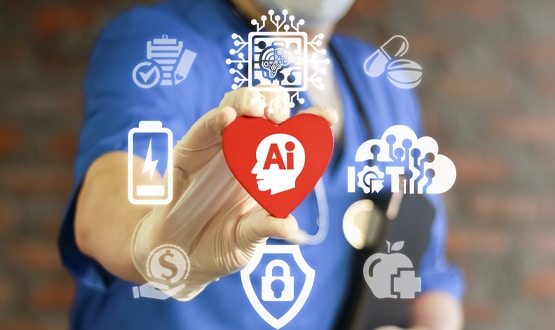Colin and Clive’s 12 top tips for a successful EPR project
- 24 March 2016

Colin Sweeney and Clive Stringer at King's College Hospital NHS Foundation Trust
Colin Sweeney and Clive Stringer worked in healthcare IT for 20 and 35 years respectively. Both have just retired from their full time jobs at King’s College Hospital NHS Foundation Trust, which has spent 20 years developing an electronic patient record system, using iSoft software and in-house development.
The trust will move to a new Allscripts electronic patient record this summer. Here, they share their top tips for implementing electronic patient record systems.
- User engagement is critical – everyone says this but, it's important that it is not just the frontline medical staff as there is a major impact on the diagnostic, pharmacy and administrative staff.
- A senior clinical lead is extremely important to champion the cause, support the team, question the approach and come up with ideas. This person has to be able to communicate with their colleagues and the ICT team, especially the ICT director and their senior managers.
- Staff with clinical, diagnostic and NHS administrative experience are equally important. They will understand how things work and not have the wool pulled over their eyes when some users become obstructive.
- A robust and stable technical infrastructure. Many people will say 'an EPR is not an ICT project, it is a business transformation programme', but without a robust infrastructure it won't work or be accepted. If the system keeps falling over then users will become more and more frustrated and revert to their old ways of working.
- Make the users mobile – on the wards the information is needed by the bed-side for ward and drug rounds and patient treatment. Going backwards and forwards to a nurses' station or office to record or view information is not acceptable and results in information being missed, which can increase risk.
- Don’t over-egg the financial benefits. EPRs improve the quality of care, the treatment of patients and the patient experience by providing information and guidance where and when it is needed. The financial return on these solutions is not as significant as some people make out..
- Flexibility in the solution is key for local configuration (and potentially development). This is important as clinical staff want fixes/improvements quickly and cannot necessarily wait for agreements from user groups and the development timescales of some of the suppliers.
- Consider inhouse development carefully. Ultimately, your team will have to maintain/support it and developers may move on, skills in different programming tools diminish over time and often what has been built locally is not well documented.
- Ensure systems meet standards of openness and interoperability. Increasingly there is a need to share information with other healthcare providers and this must be the way forward.
- Credibility is a benefit of an incremental roll out. There is no better advert or incentive to use the system than endorsement by those who actually use the system rather than someone from IT saying you must.
- Build up a track record of success. This allows you to fail sometimes, and that is really important if you want to try things that no one else has done before .
- Think of yourself, family and friends as potential patients. Your aim should be to implement something that benefits them.
Colin Sweeney and Clive Stringer reflected on their long careers in healthcare IT and on its prospects for the future with Digital Health news editor Rebecca McBeth recently. Read more about the development of IT at Kings in features.




